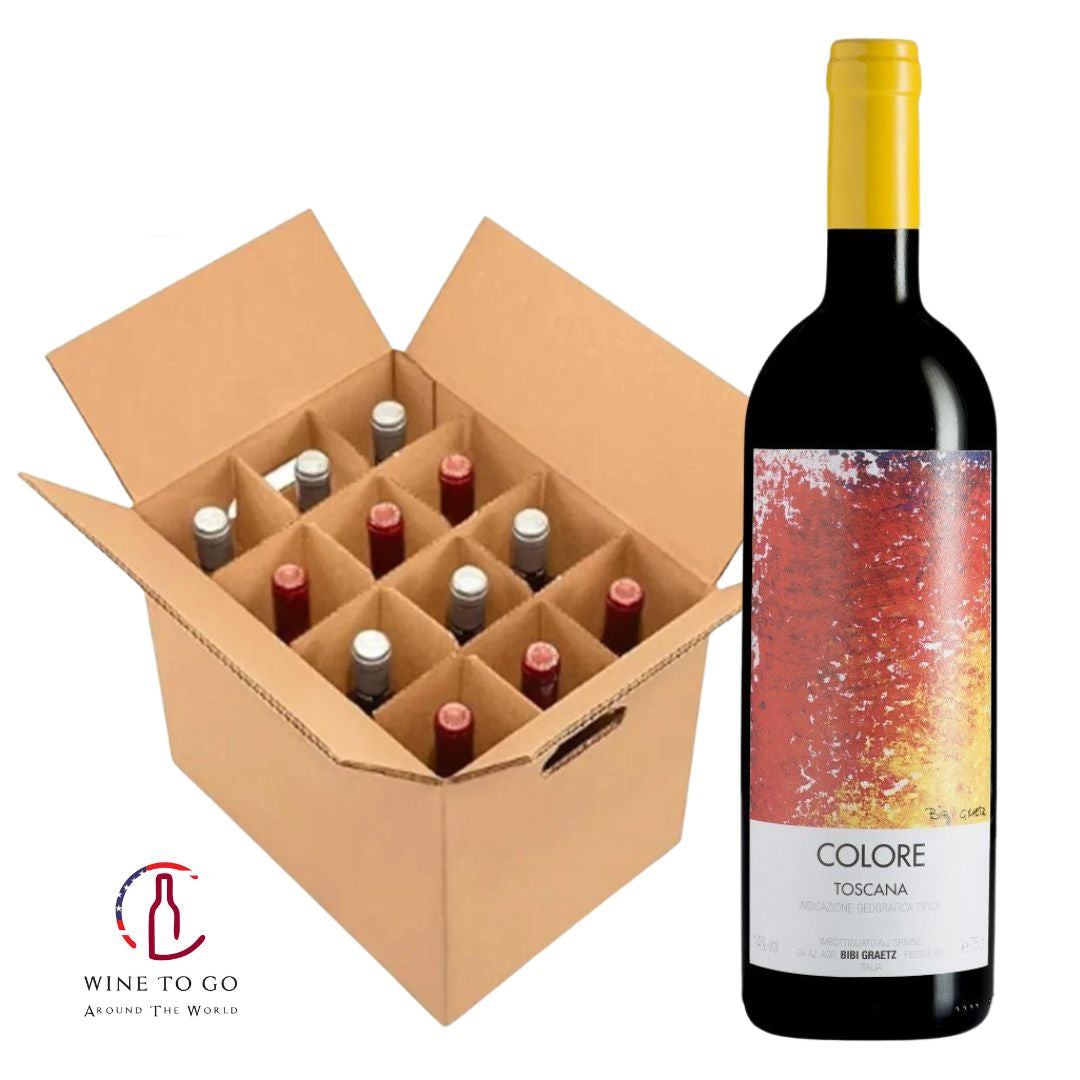Bibi Graetz
2018 Bibi Graetz Colore
2018 Bibi Graetz Colore
Couldn't load pickup availability
All sales from WINETOGOUSA are final. We offer global shipping. Please note that recipients in the United States must be legally eligible to accept deliveries containing alcohol.
Winemaker Notes
Compared to the Testamatta that proved more dicult during the blending phase, Bibi Graetz's 2018 Colore came together without a hitch, as he tells it. With this vintage, the Colore (with 9,000 bottles produced) has almost become a single-vineyard wine, since up to 90% of its fruit comes from old vines (these are majestic plants from 80 to 135 years old) in the high-altitude Lamole area where Bibi farms ve hectares. The addition of Colorino to this Sangiovese-based wine has been reduced to a mere 5% in this vintage: "Just like a touch of lipstick," Bibi says. The Colorino grape adds noticeable lift and buoyancy in this vintage. Next to the Testamatta, you get more structure and backbone here, with deep and penetrating red berry fruit, ruby cherry, crushed aspirin, ferrous earth, crushed owers and some of the fragrant steeping herbs used in Fernet-Branca. My only hesitation is that the wine takes long to yield on the bouquet, and I coaxed two bottles of Colore over two days before writing this note. As a result, I recommend pushing the drinking window forward by a few extra years to give the wine time to esh out and open fully.
About Winery
From a medieval castle, Castello di Vincigliata, acquired by his parents over 60 years ago, winemaker Bibi Graetz crafts his wines on a hillside overlooking the great city of Florence. Beginning initially with only a small, 5-acre vineyard on this hillside in Fiesole, in little under two decades, Bibi has become one of Italy's most ingenious winemakers adding "cult winemaker" in addition to "talented abstract artist" to his dossier.
Since the release of his first wines in 2000 and without any formal training, Bibi Graetz has managed to stir-up the Tuscan wine scene, and with the creation of Testamatta and Colore, has made his name eponymous with great Tuscan wines. Regularly scoring in the high 90’s with wine publications like Wine Spectator, Wine Advocate, and James Suckling, coupled with his unique and artisanal winemaking approach, Bibi Graetz’s wines have garnered a loyal following among wine collectors and wine trade.
Sourcing grapes from parcels of old vines around Tuscany give the Bibi reds great depth and soul; while grapes from vines on the Isola del Giglio have provided proof that Tuscany can be known for beautiful white wines as well. This affinity for old vines allows for the concentrated yet elegant wines of Bibi Graetz making this portfolio a collectible from Tuscan producers. His passion for producing his flagship wines exclusively from traditional varieties of Sangiovese, Colorino, and Canaiolo for the reds and the indigenous varieties of Ansonica and Vermentino for his whites have resulted in very distinctive wines that consistently set his wines apart from those from the rest of Tuscany, and Italy.
Share

